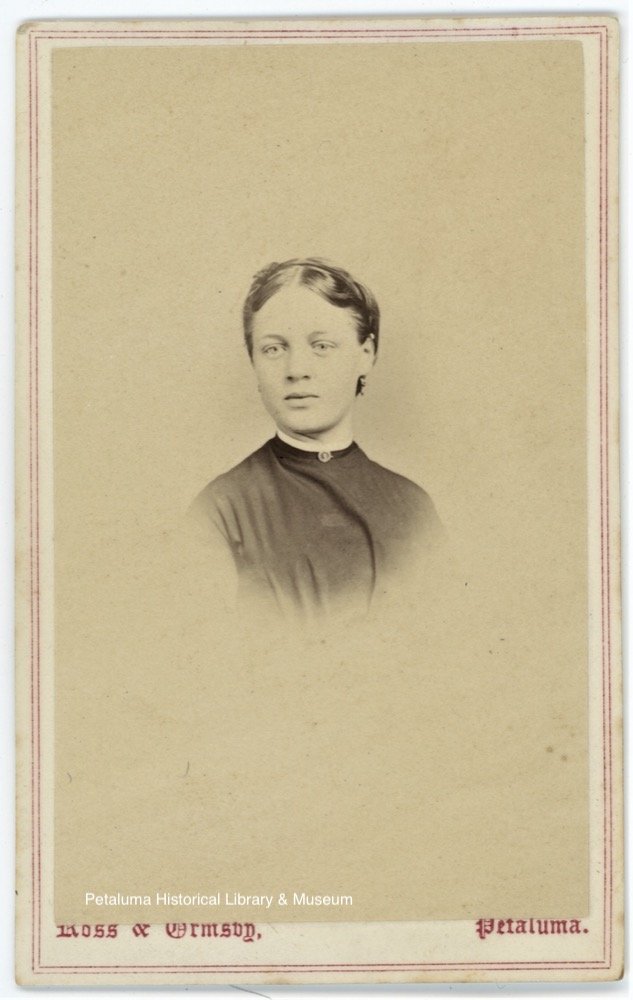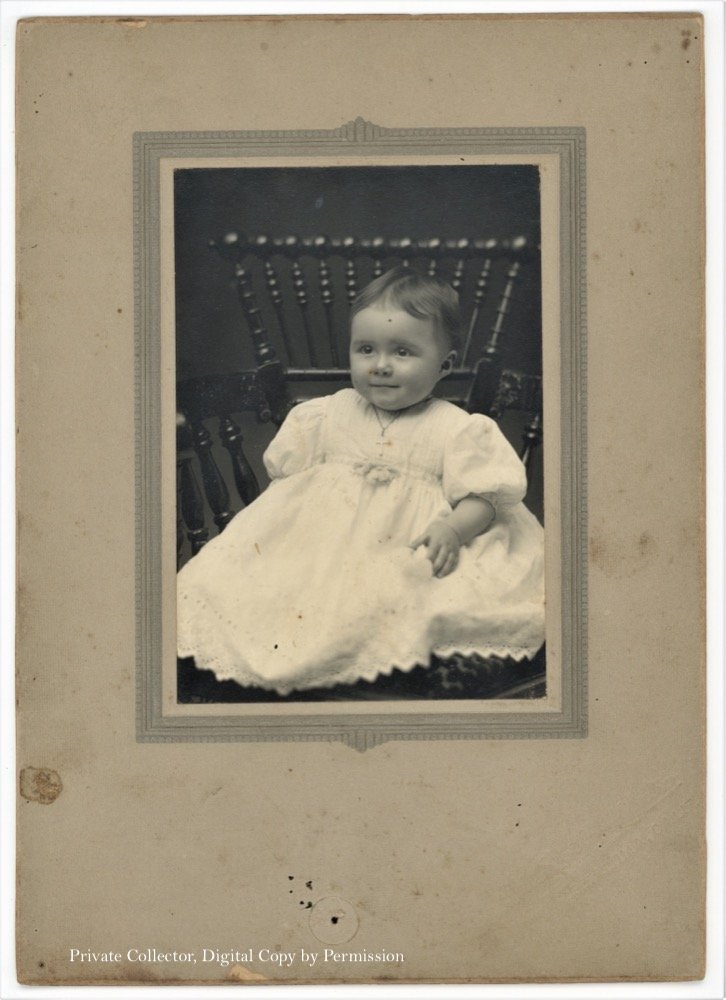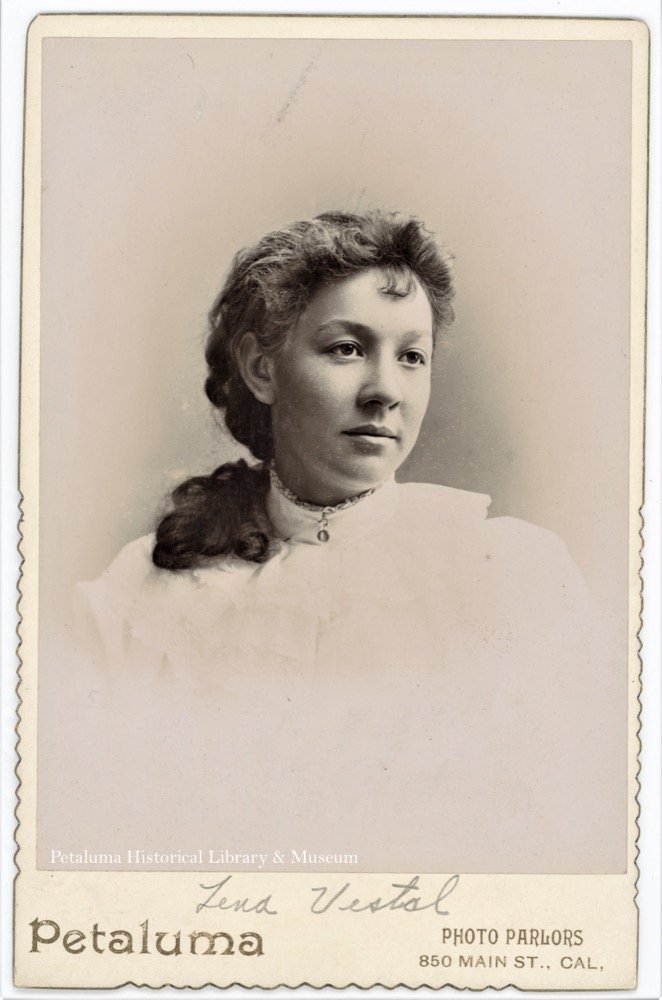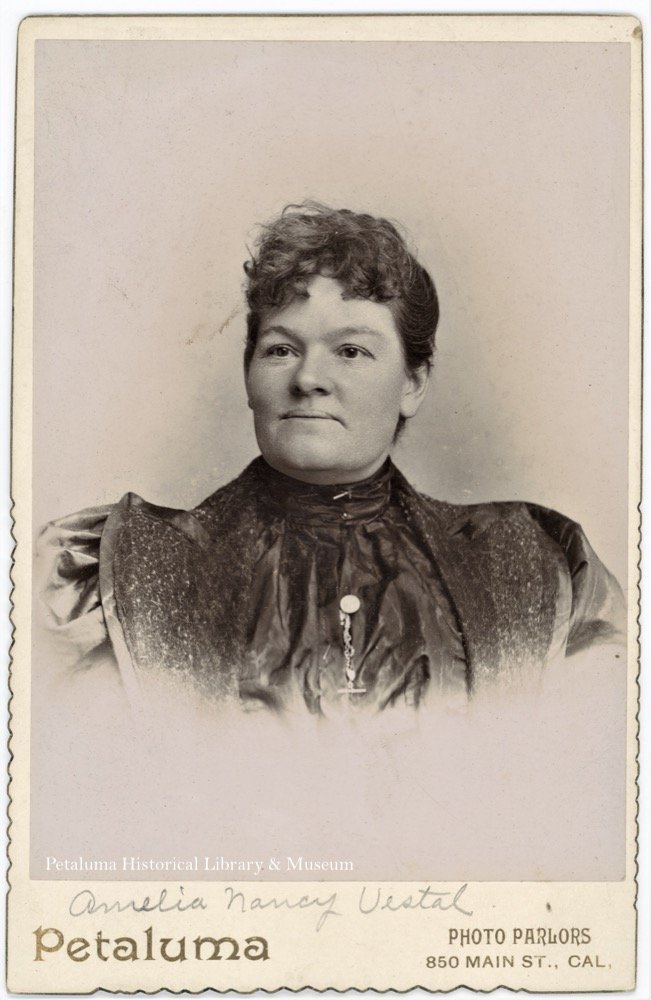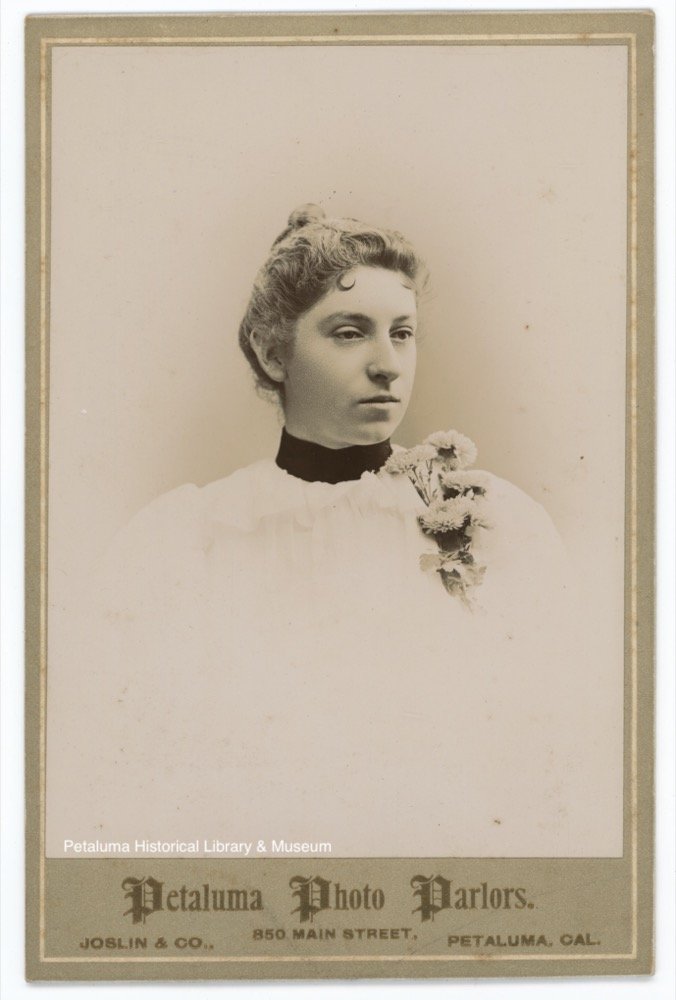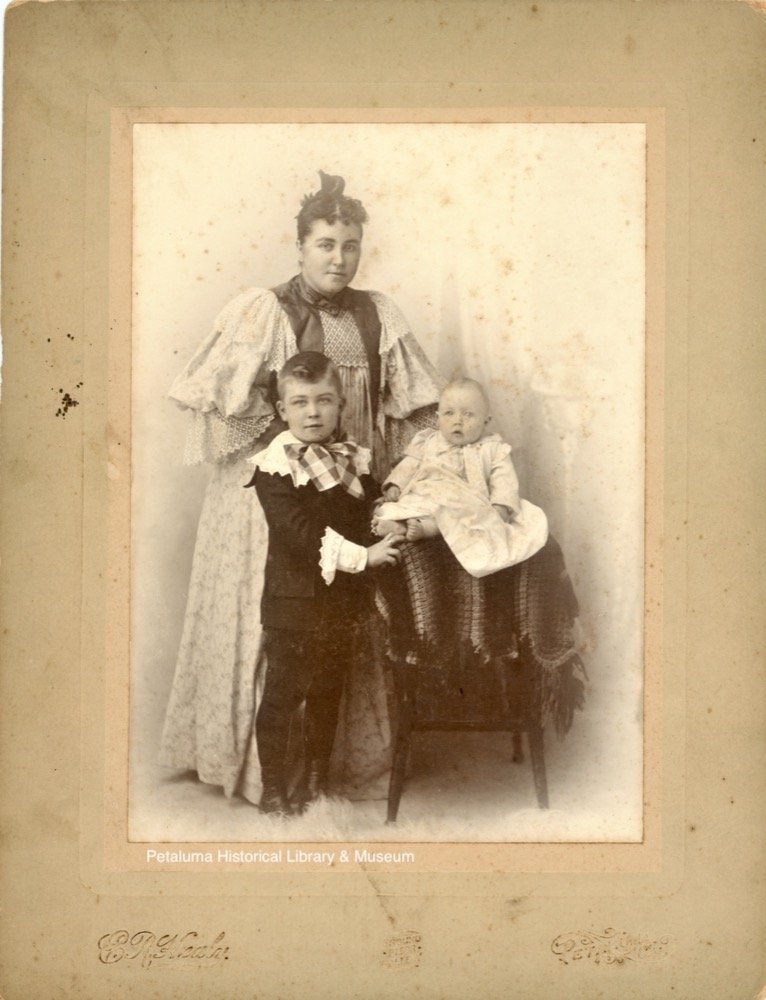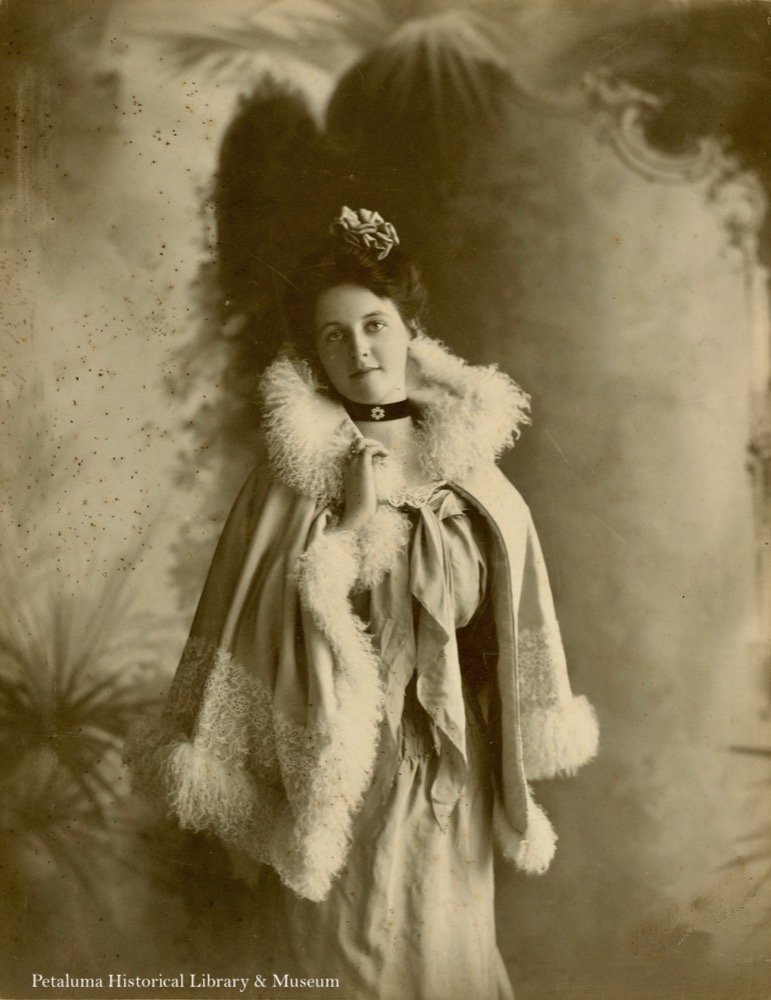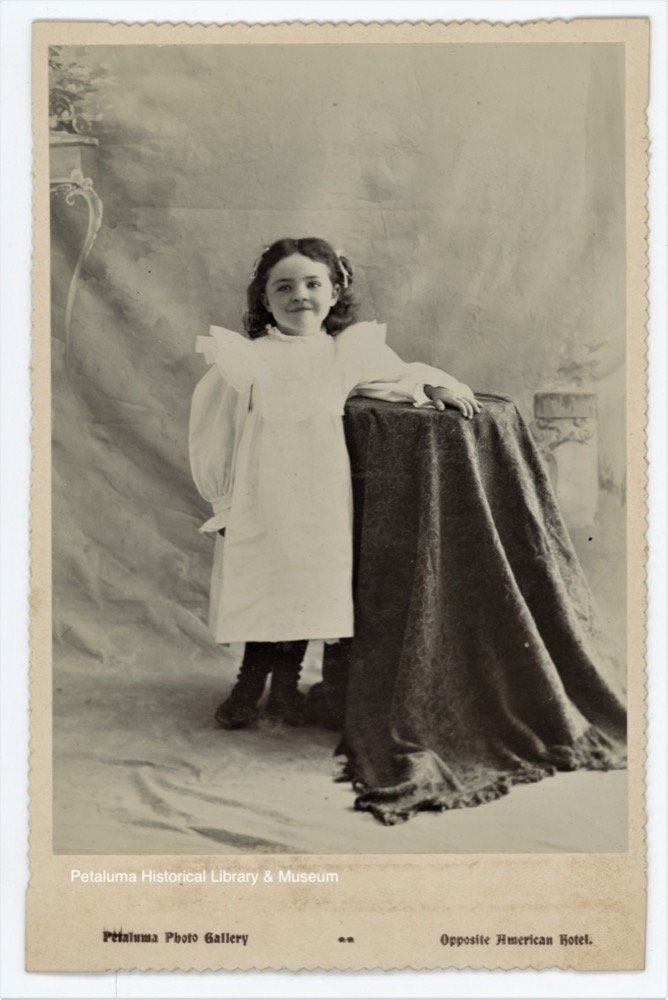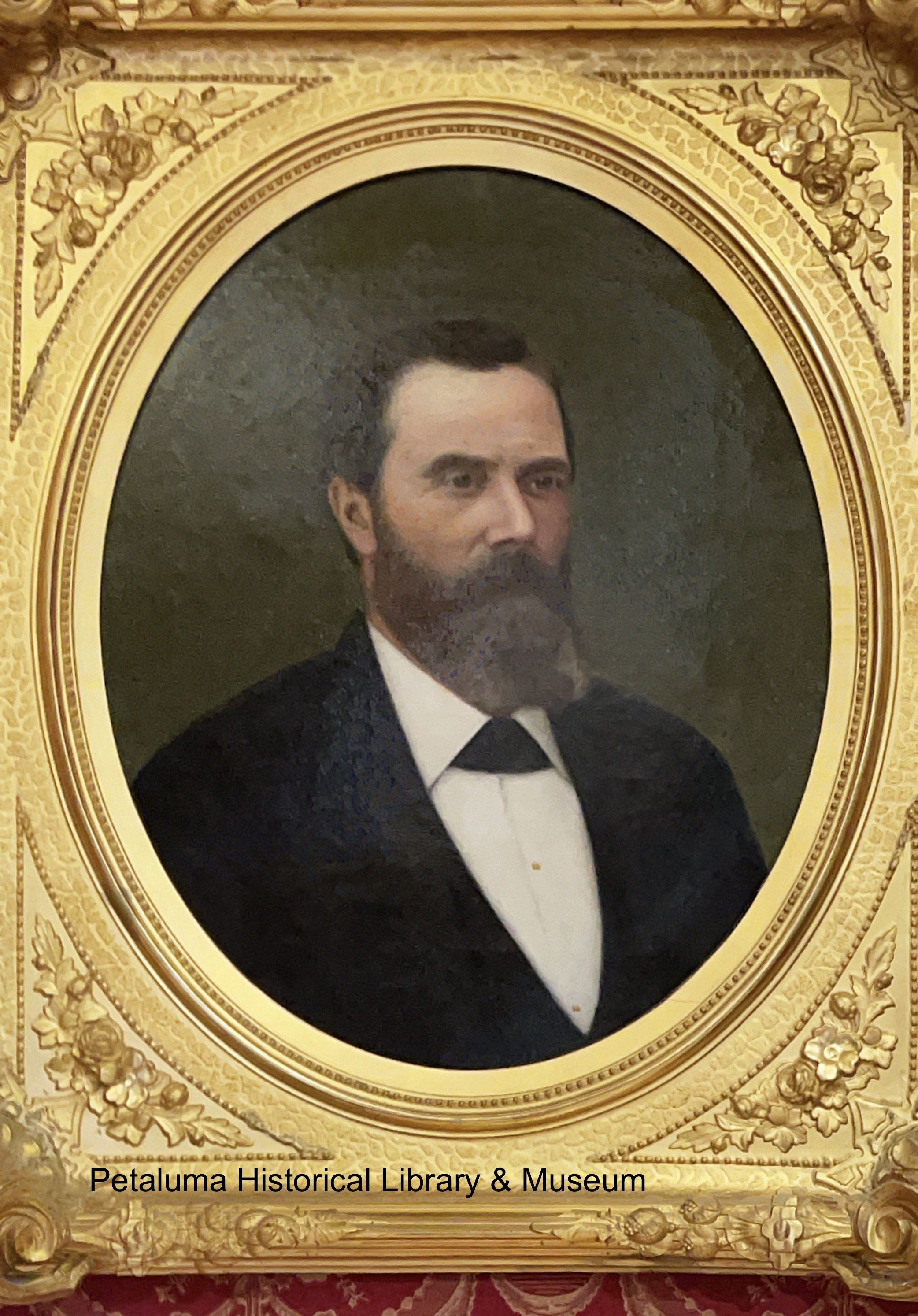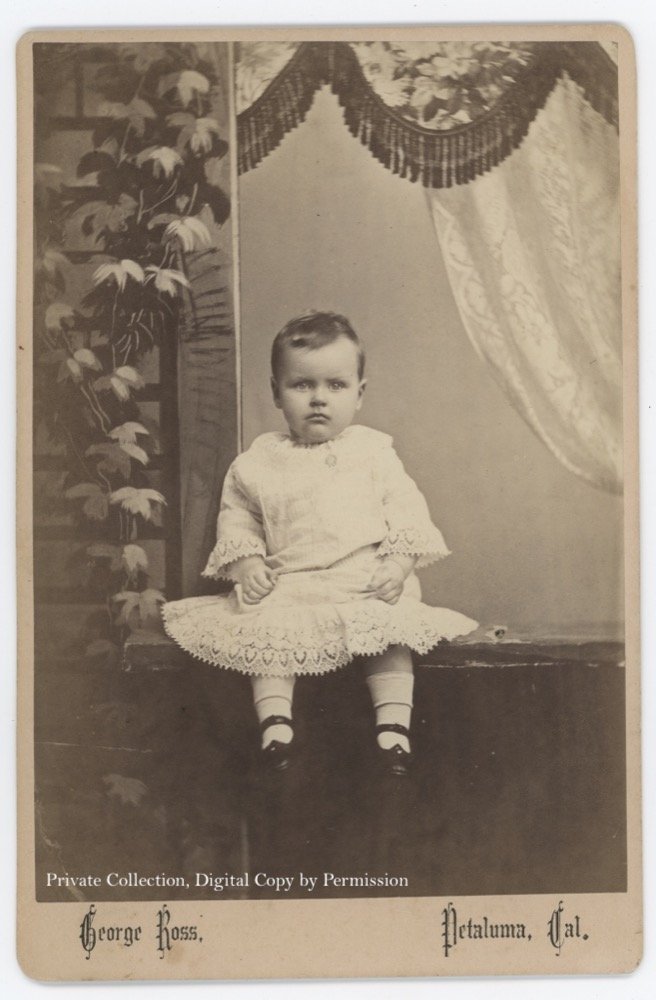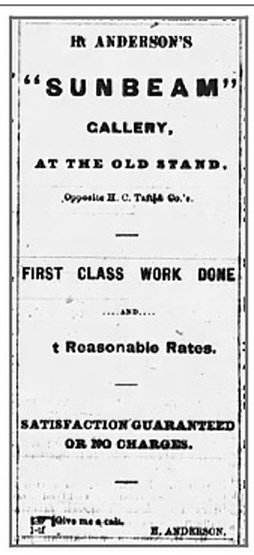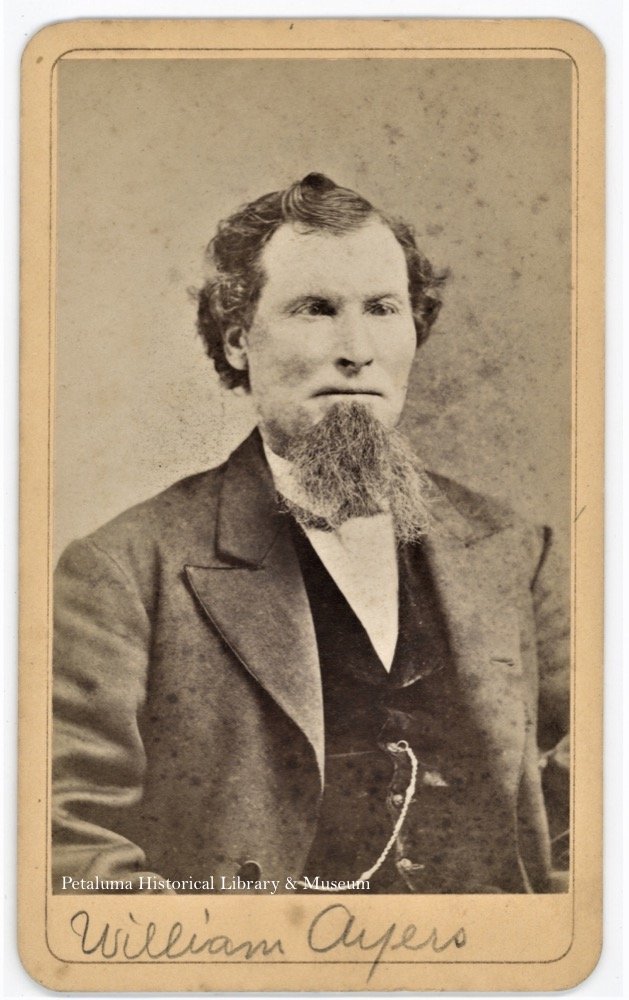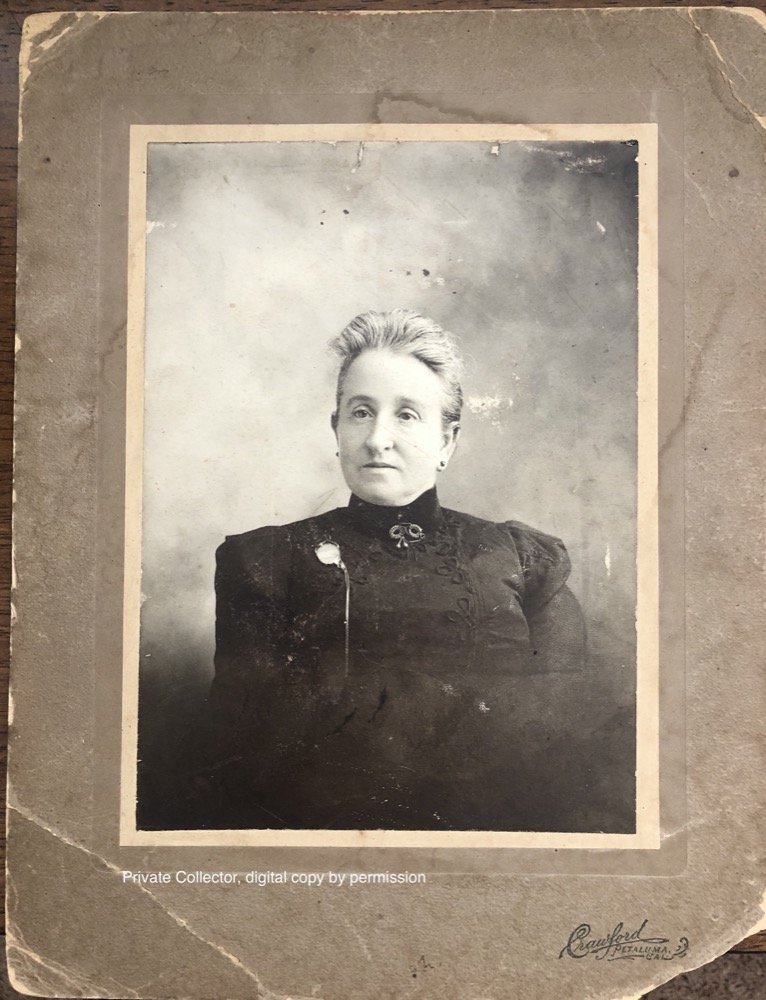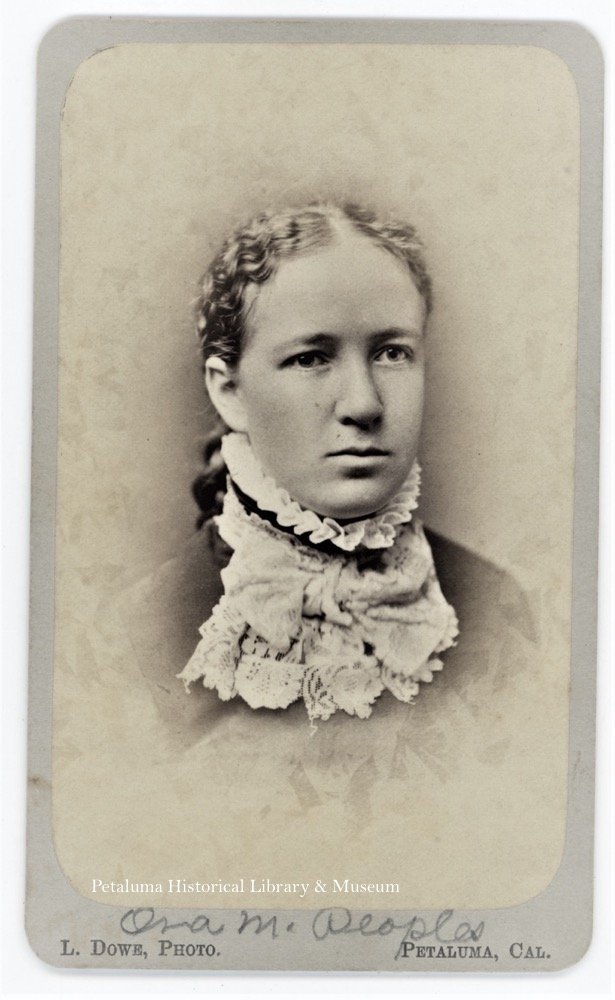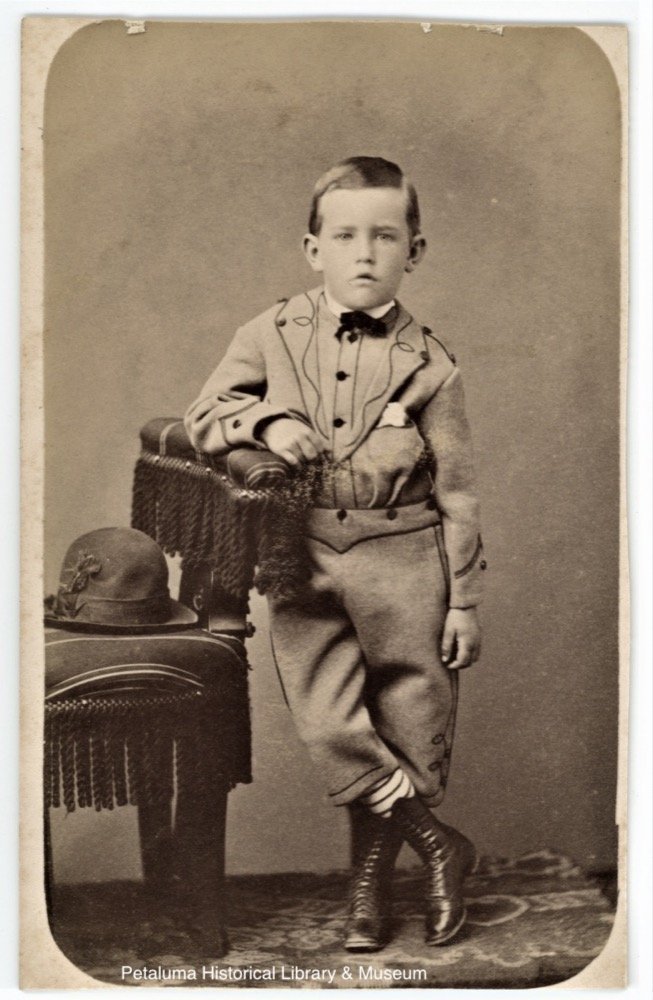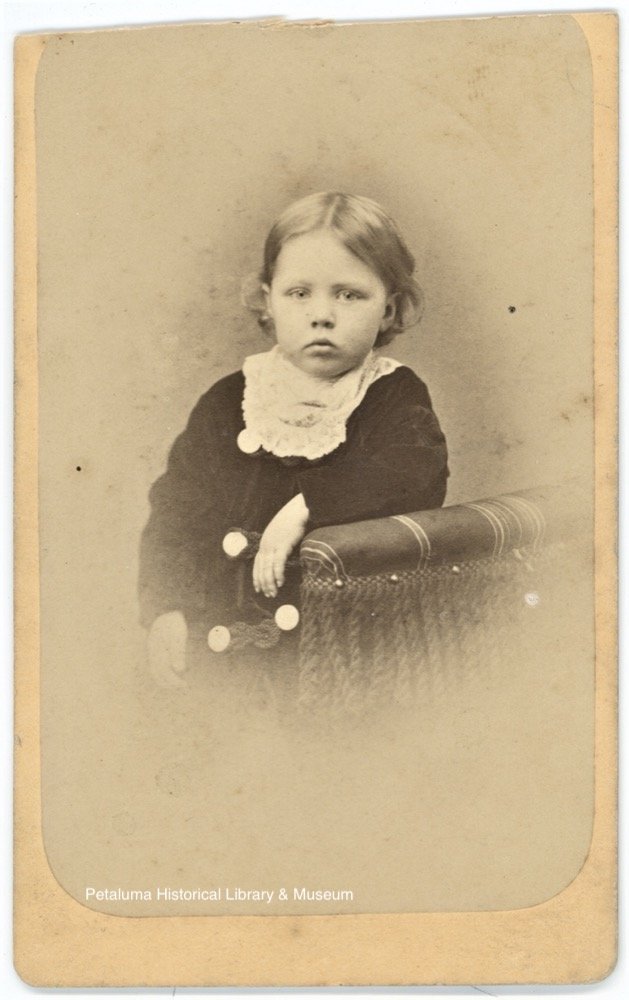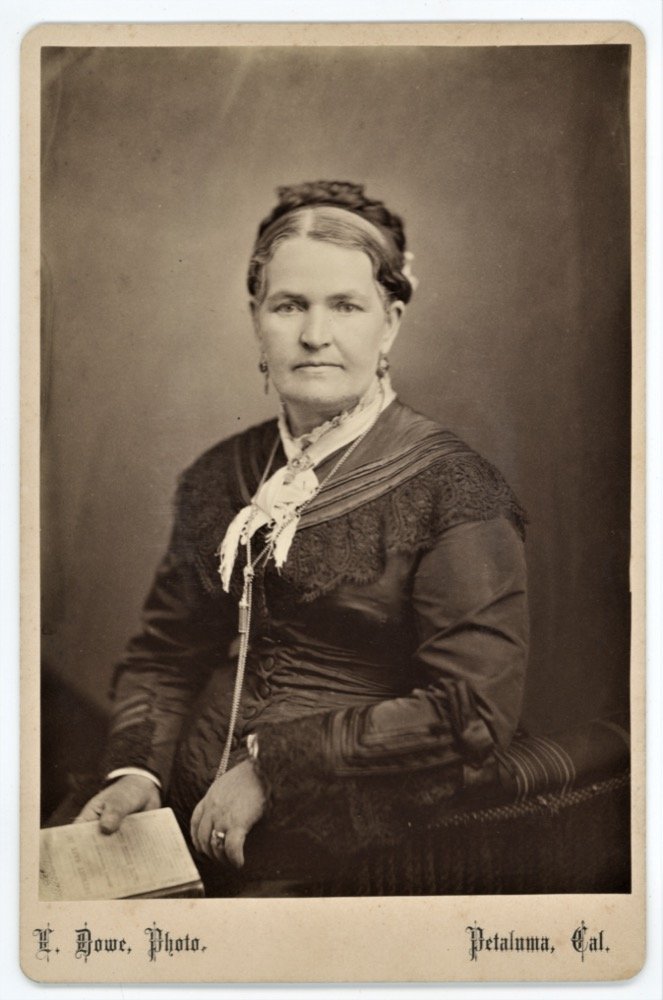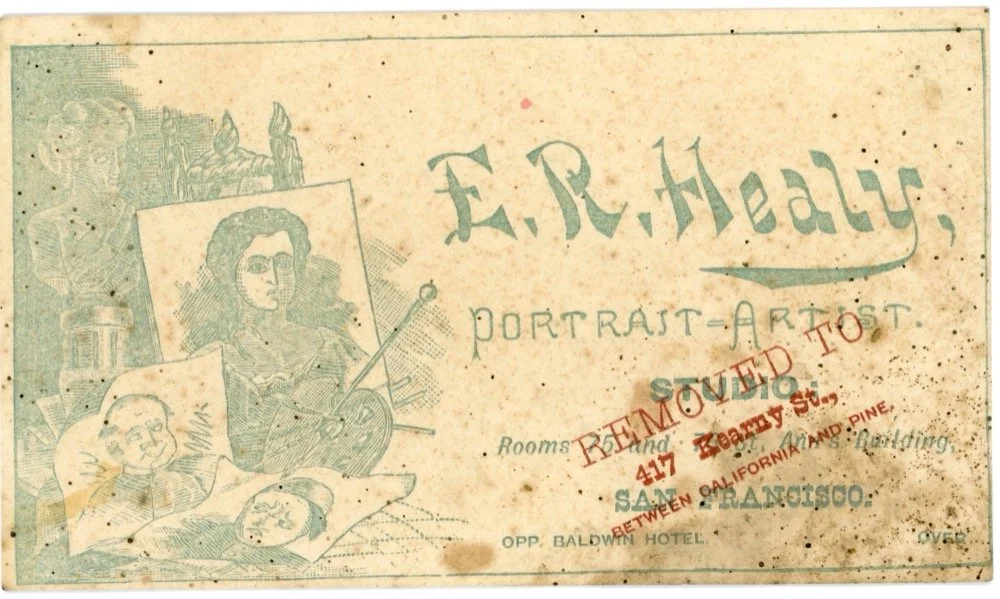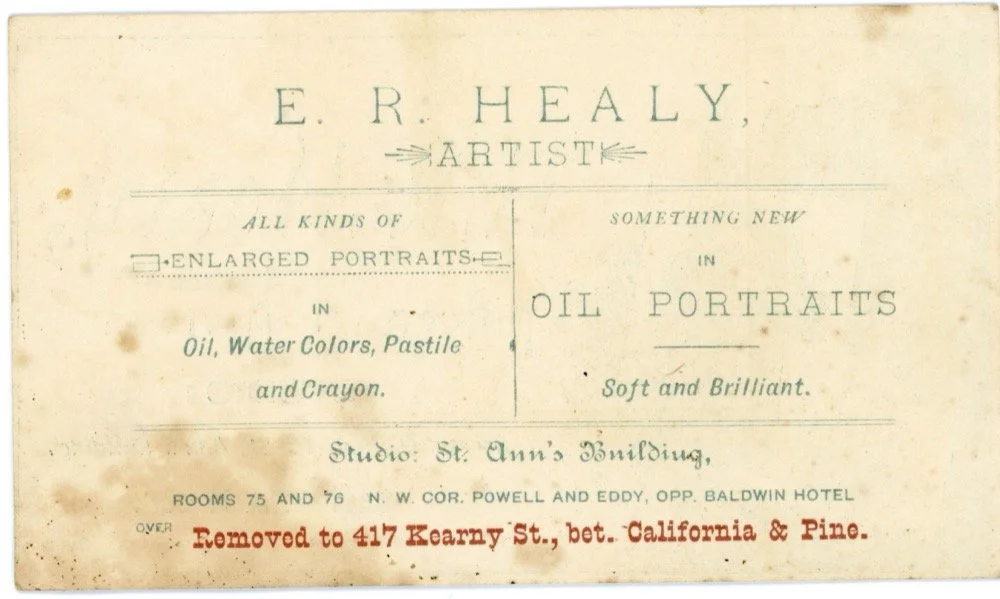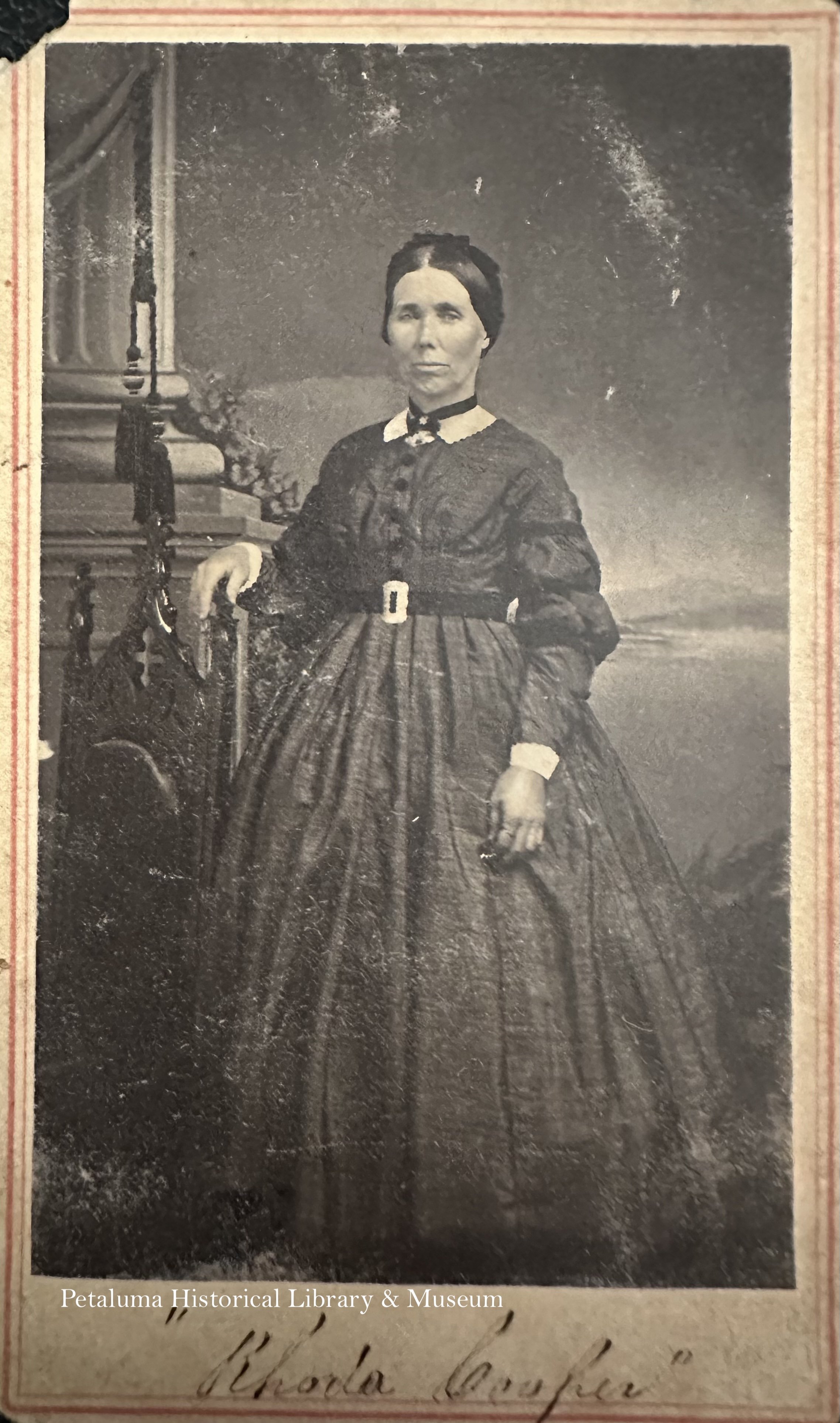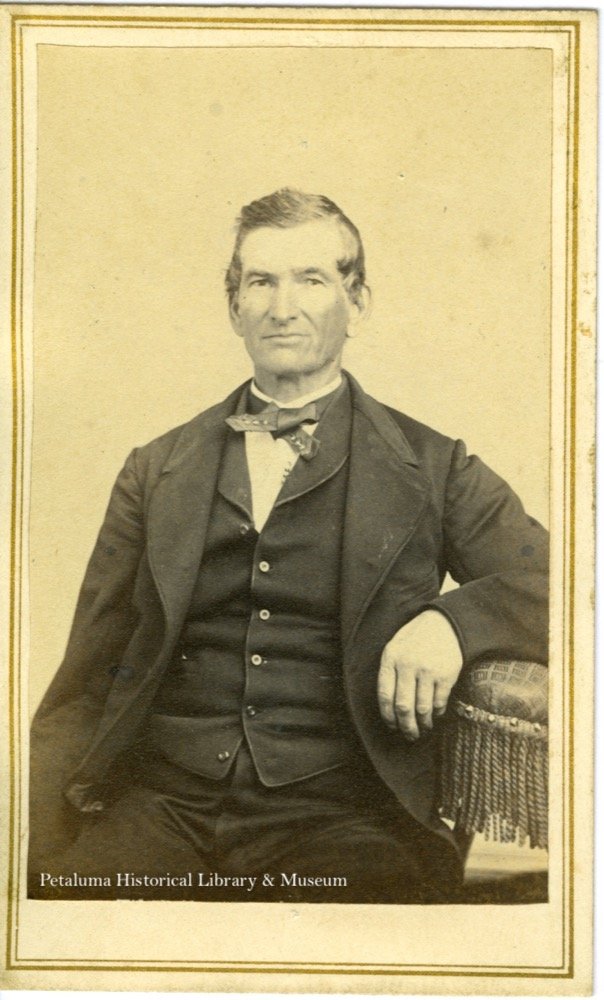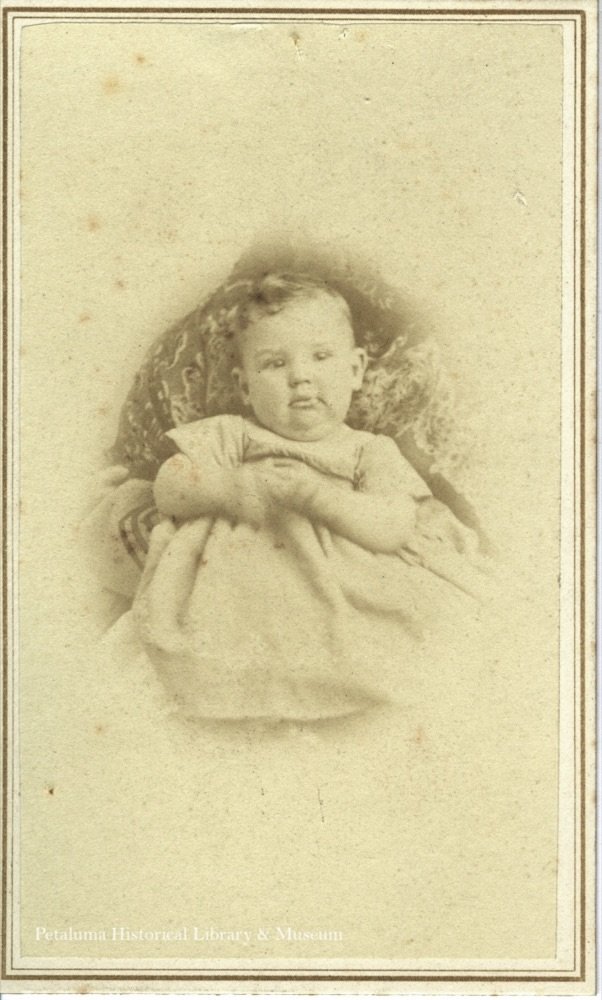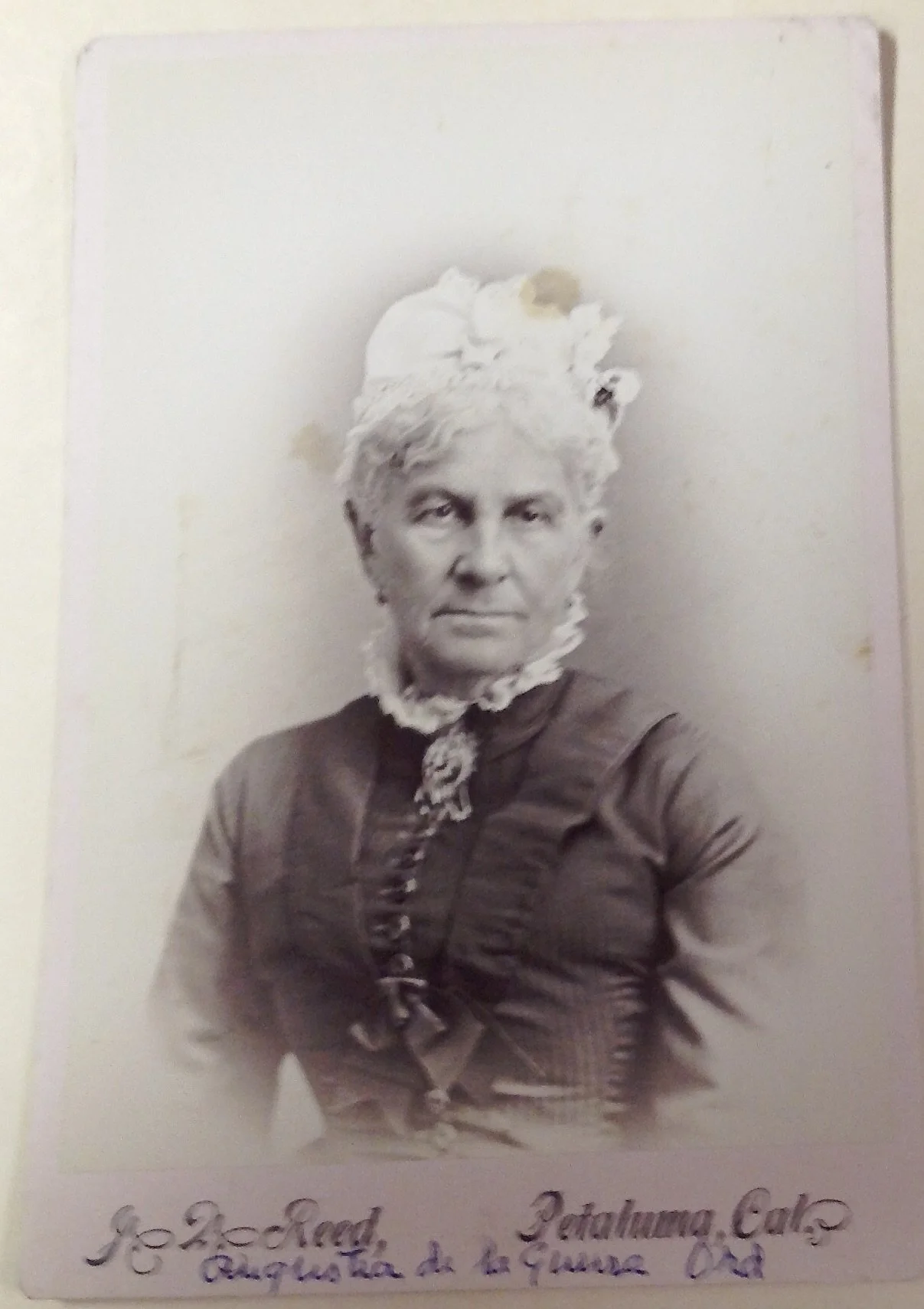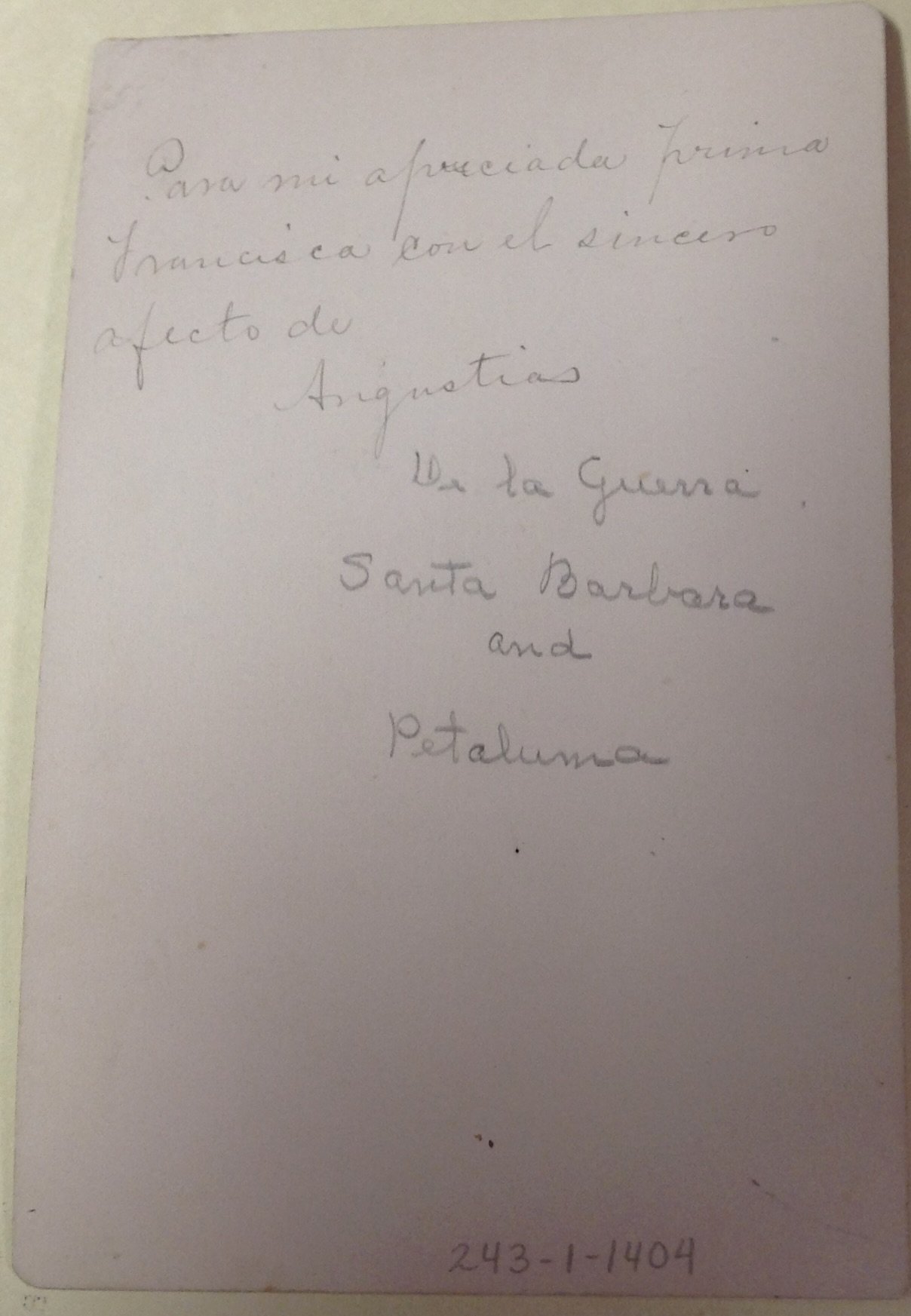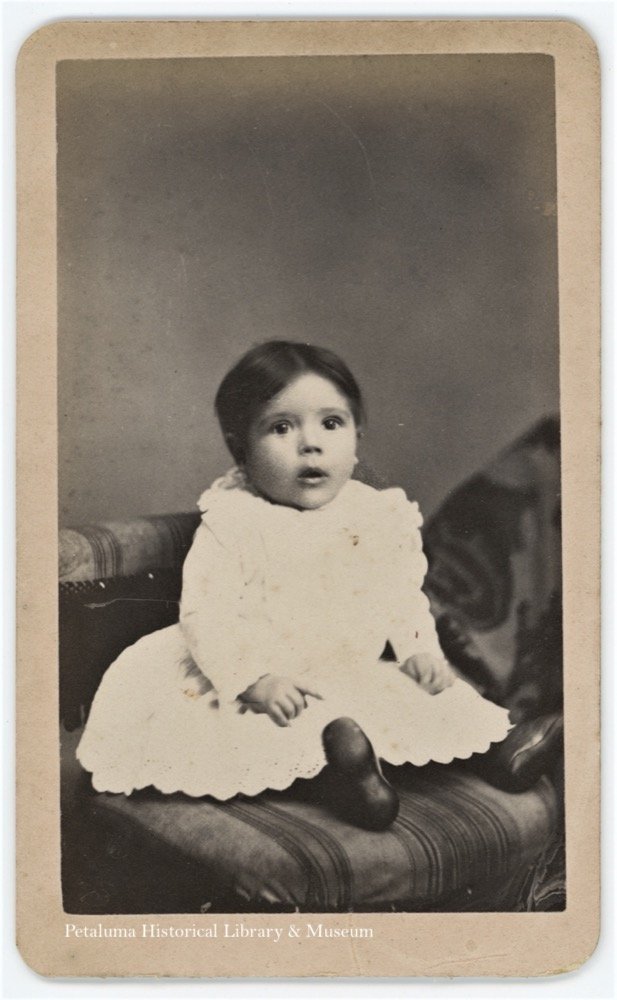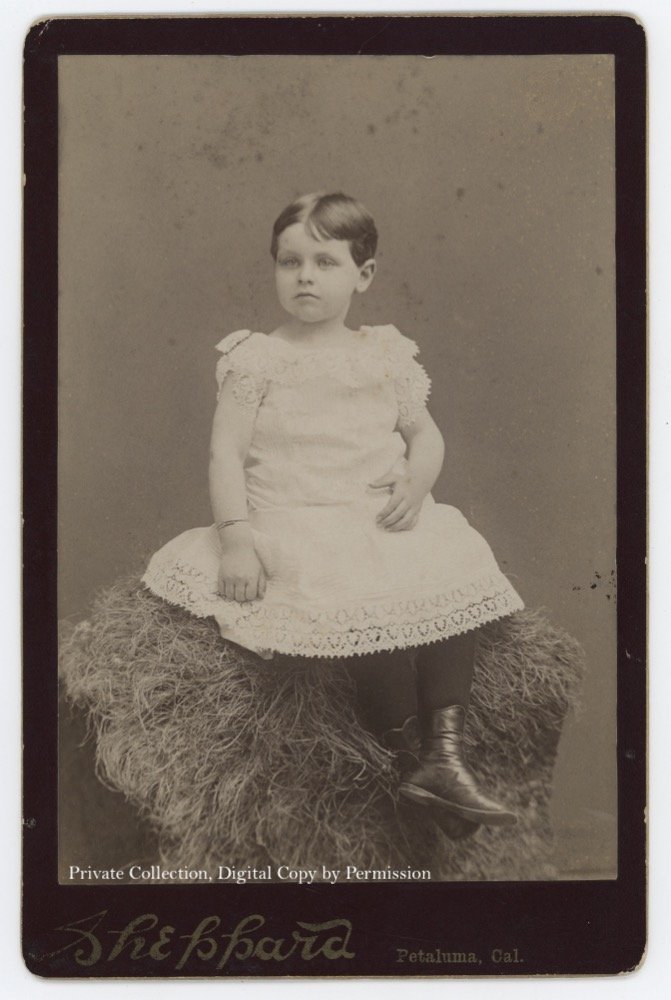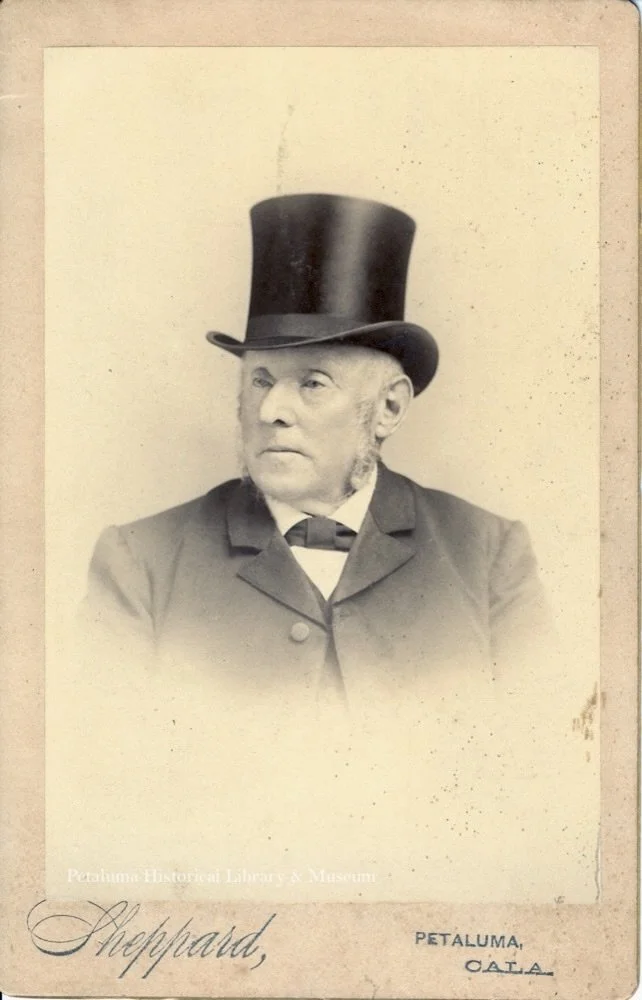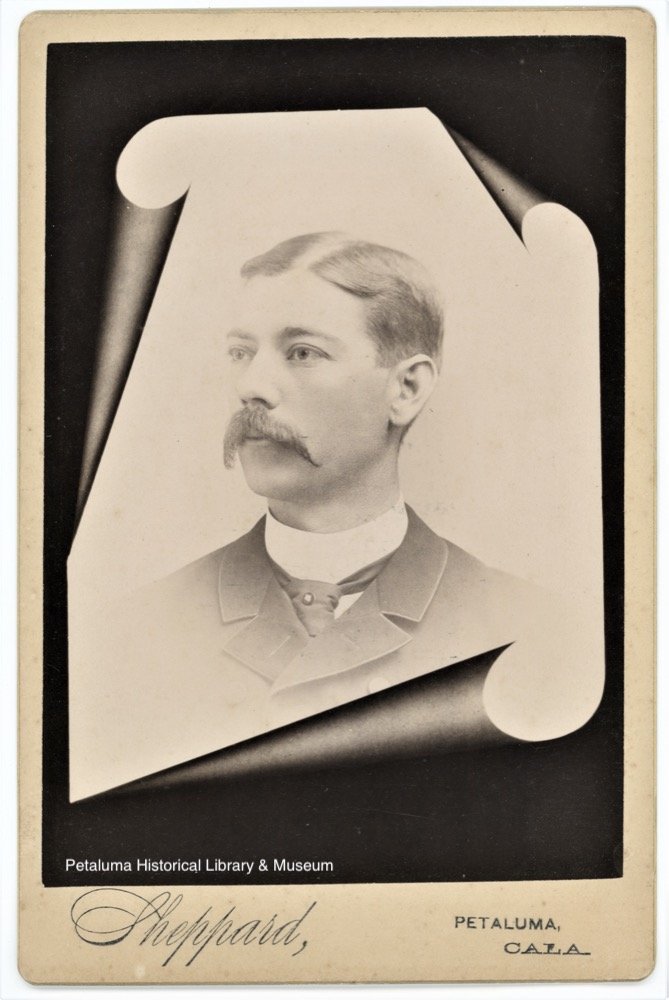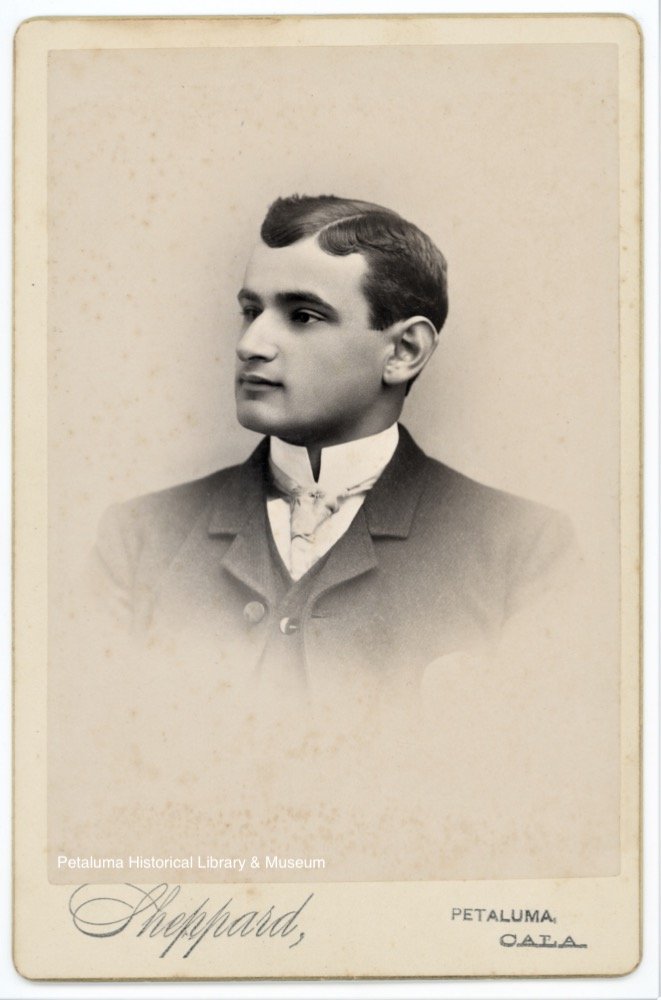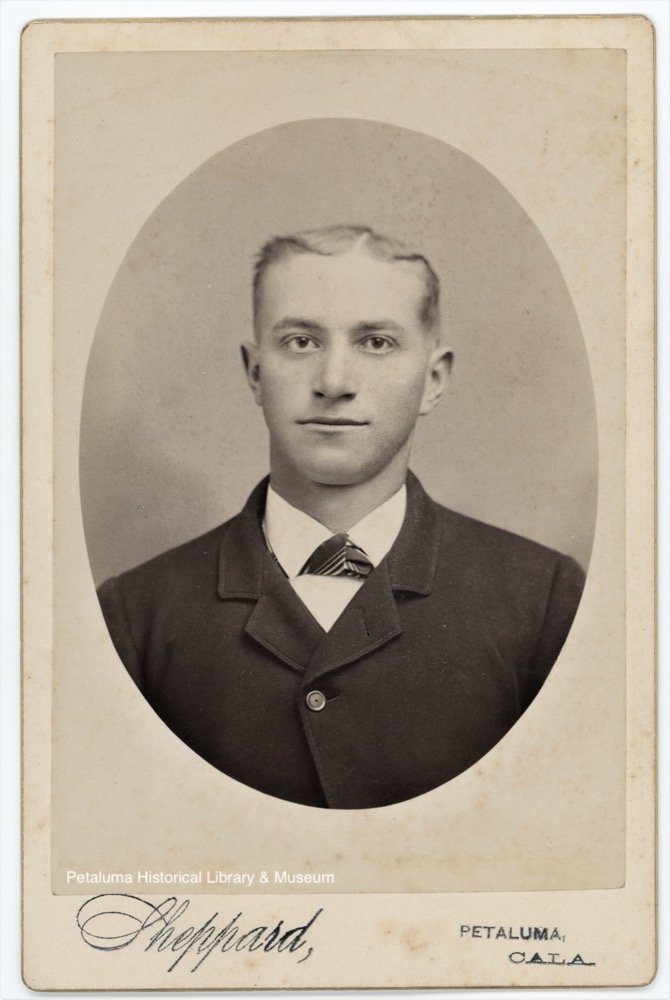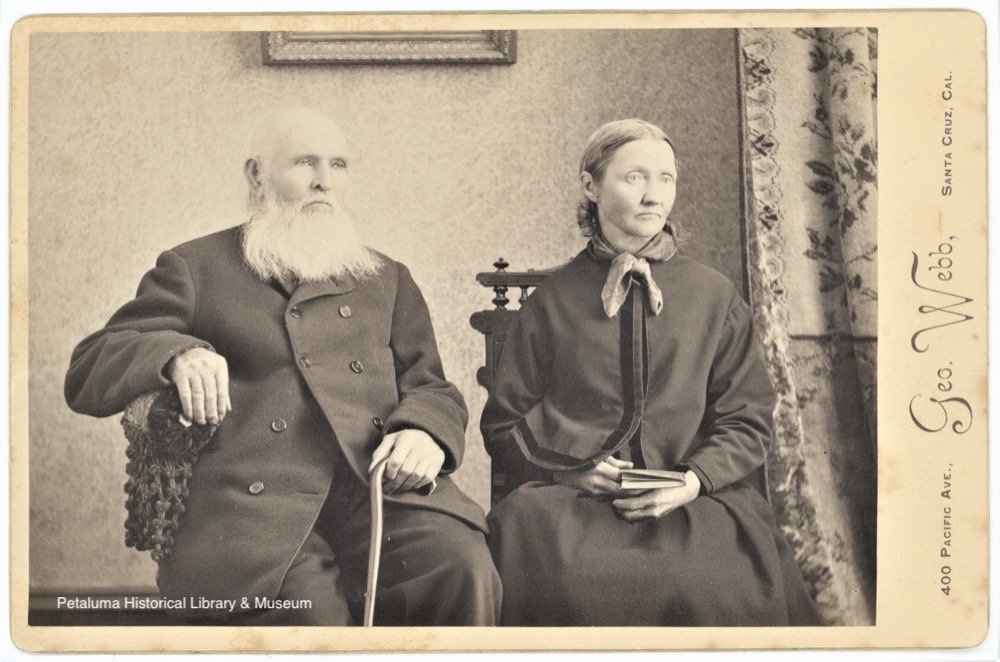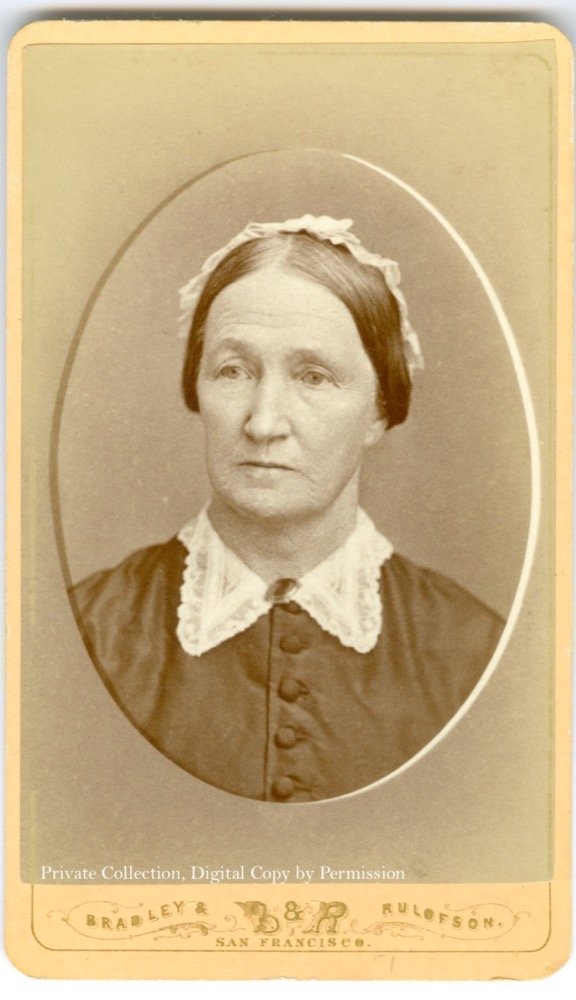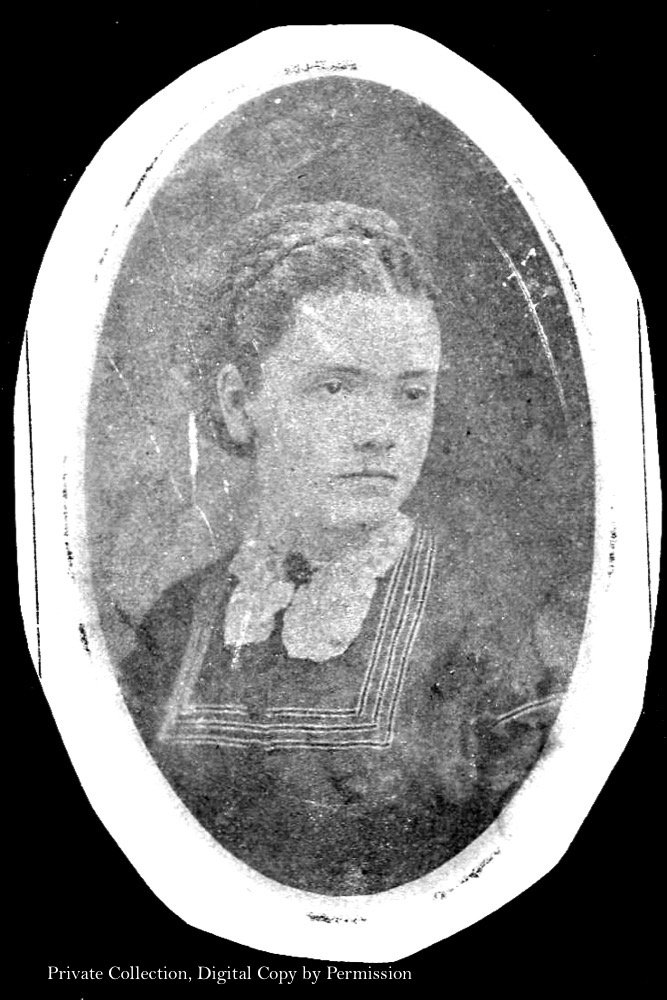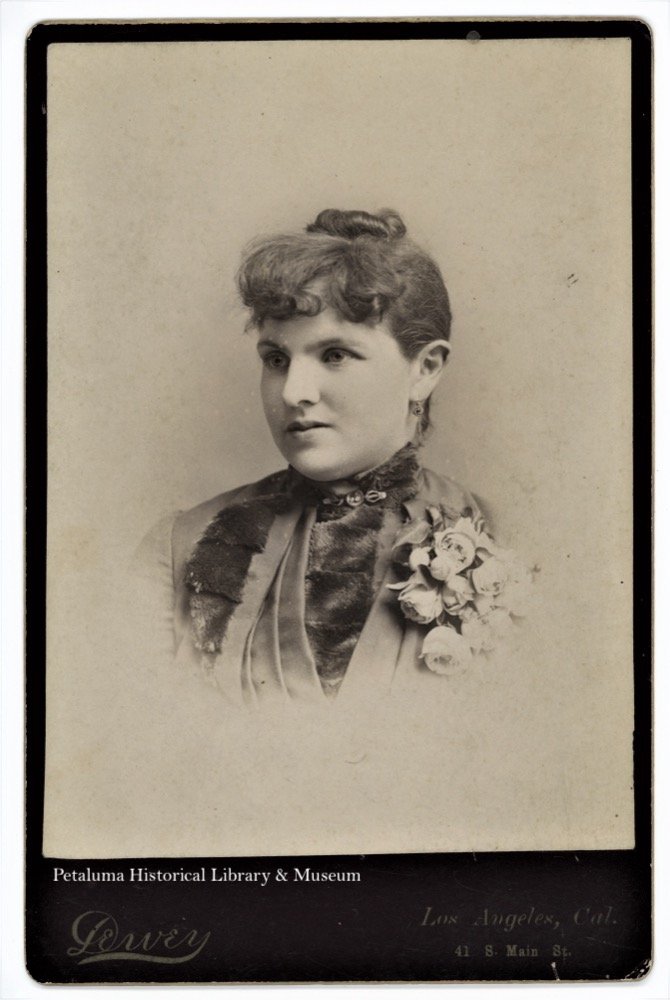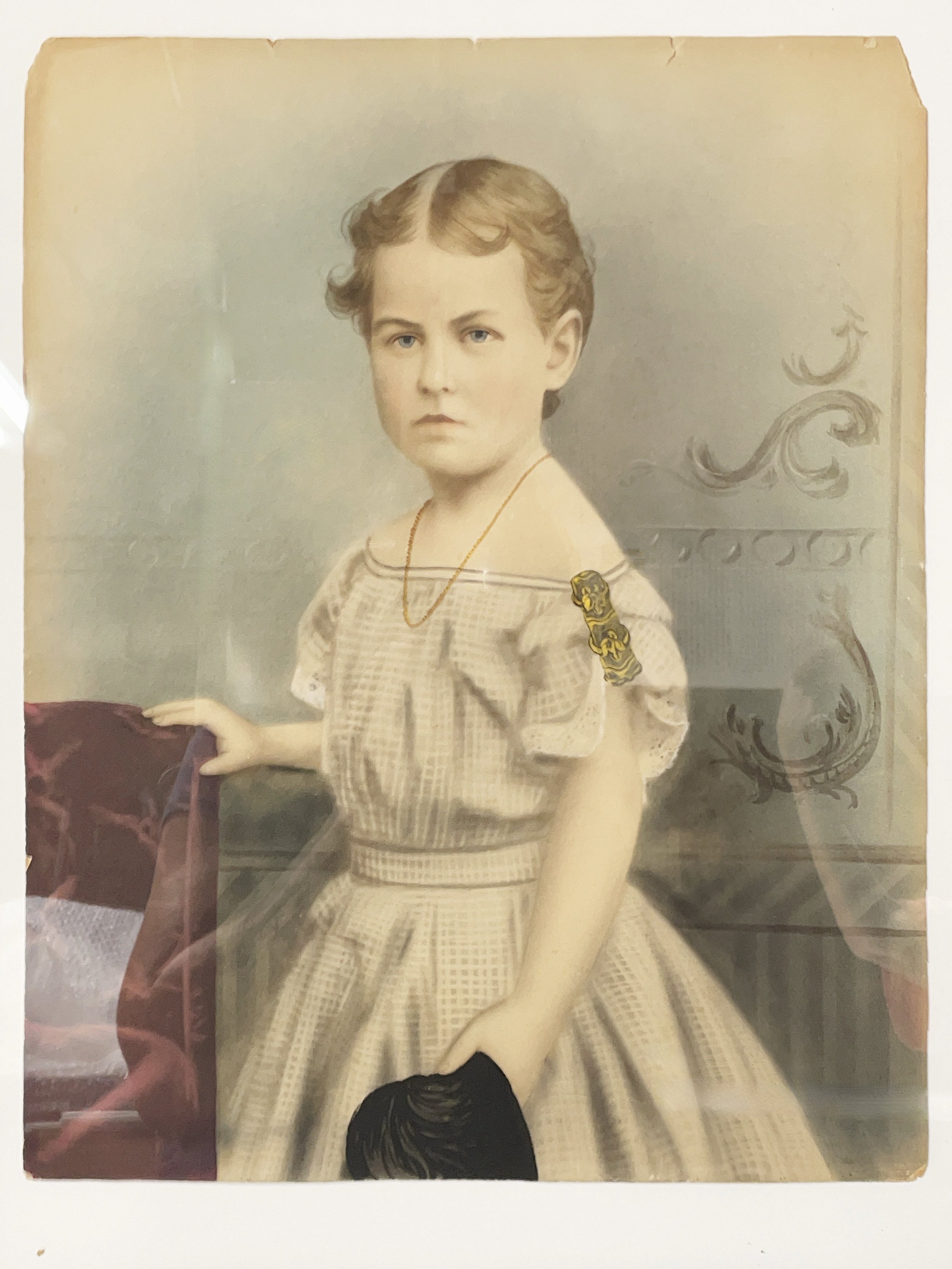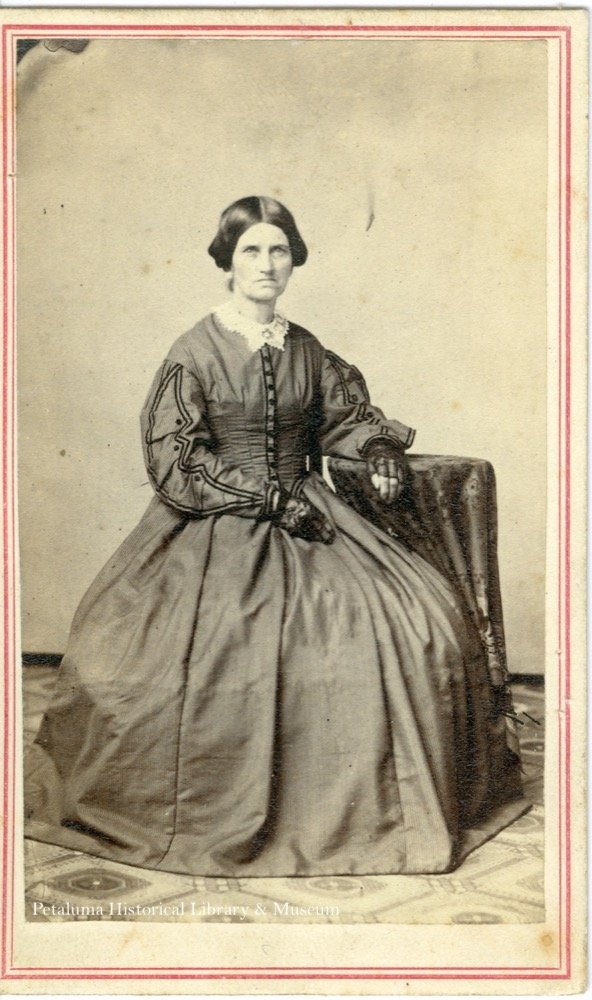DECKER & DECKER studio was opened in Petaluma in January 1925. It replaced the Giroux Studio located at 170 Main Street in the Wickersham Building. Decker & Decker was owned and operated jointly by Shirley Gertrude Kelly (Kelley) Decker and her husband, George Alex Decker. The year the studio was opened, the local papers reported on its progressive and up-to-date features. The new studio featured a bright electric sign that illuminated the facade of the studio, state-of-the-art interior lighting, and professional picture framing. Shirley and George proudly reported to the Petaluma community that they kept up-to-date on photographic technology. The local papers reported in July 1931 that they attended the Photographers’ International Association of America Summer School in Winona Lake, Indiana, and the Photographers’ Convention in Cedar Point, Sandusky, Ohio. In June 1942, they purchased the Gainsborough Studio at 129 Kentucky Street, in the Schluckebier building, “next to the telephone building”. They transferred to this new location, updating their equipment and installing modern fluorescent lighting. When George died in November 1943, Shirley continued to own and operate the studio until she sold it to her former employee, Anna Grimm, and her husband, Kenneth in 1954.
Shirley Gertrude Kelly (Kelley) Decker Nelson was born February 26, 1895, in Washington state and died August 14, 1991, in Santa Rosa, California. She studied design prior to marrying George Decker in Los Angeles, California, on August 16, 1923. She was the joint owner and operator of Decker & Decker studio with her husband from January 1925 until his death in November 1943. Ascertaining their division of labor is problematic; however, their advertisements market them as equal partners. Both their names appear in their advertisements, and “Double Decker” was used as a cleaver logo. Shirley specialized in color portraits. Advertisements announcing “A Portrait Complete - In Color by Shirley Decker” were published in the 1930s. She was also known for her ability to insert missing individuals into group portraits by manipulating negatives. This skill was referred to as “photograph copy work”. Shirley was a Soroptimist International of Petaluma charter member and served as secretary and president.
On May 25, 1947, Shirley married another photographer, Theodore J. Nelson, who owned and operated the Nelson Studio on Mendocino Avenue in Santa Rosa. She departed Petaluma to live with him in Santa Rosa but, for eleven years, commuted to Petaluma to continue operating her Decker & Decker Studio. Shirley was buried in Petaluma’s Cypress Hill Memorial Park.
George Alex Decker was born January 8, 1888, in New York City and died November 2, 1943, in Petaluma. He began as a pharmacist in New York but moved to Los Angeles, California, where he married Shirley Gertrude Kelly on August 16, 1923. According to the Petaluma Daily Morning Courier, George and Shirley arrived in Petaluma after spending four years on the coast which included time in San Francisco and Berkeley. The couple opened their Decker and Decker studio in January 1925, and George worked there until he died in 1943. He was buried in Petaluma’s Cypress Hill Memorial Park.
Active in Petaluma: George and Shirley operated the Decker and Decker studio together between January 1925 and George’s death in November 1943. After his death, Shirley continued to operate the studio by herself until she sold it to Anna and Kenneth Grimm in 1954.
Bibliography: Los Angeles Times: Aug. 17, 1923, p. 18. Petaluma Argus-Courier: Jan 22, 1925, p. 1; Aug. 8, 1925, p. 1; Dec. 5, 1926, p. 8; July 2, 1931, p. 6; July 3, 1931, pp. 3 and 6; Jul. 26, 1931, p.10; Sept. 10, 1931, p. 8; June 6, 1937, p. 2; Feb. 28, 1947, p. 2; Jan. 9, 1940, p.10; May 8, 1942, p. 1; June 25, 1942, p. 2; June 27, 1942, p. 5; June 26, 1943, p. 5; November 3, 1943, p. 3; Nov. 5, 1943, p.4; June 9, 1945, p. 4; March 14, 1947, p.3; May 25, 1947, p. 2; June 10, 1947, p. 8; Nov. 17, 1955, p. 10. Petaluma Daily Morning Courier: Jan. 22, 1925, p. 1; Jan 23, 19125, p.1; May 25, 1925, p. 7; Jul. 27, 1925, p. 8; Aug. 19, 1925, p. 3; Press Democrat (Santa Rosa, CA), Nov. 5, 1943, p. 5; August 15, 1991, p. 16. Santa Rosa Republican: Nov. 5, 1943, p. 5. https://digital.sonomalibrary.org/about/photographers; https://www.findagrave.com/memorial/219508204/george-alex-decker ; .https://www.findagrave.com/memorial/219728752/shirley_nelson . https://www.ancestry.com/family- ; tree/person/tree/81597727/person/152223290985/facts?_phsrc=NMa3&_phstart=successSource
Click on any thumbnail for an enlarged version and additional information.

























